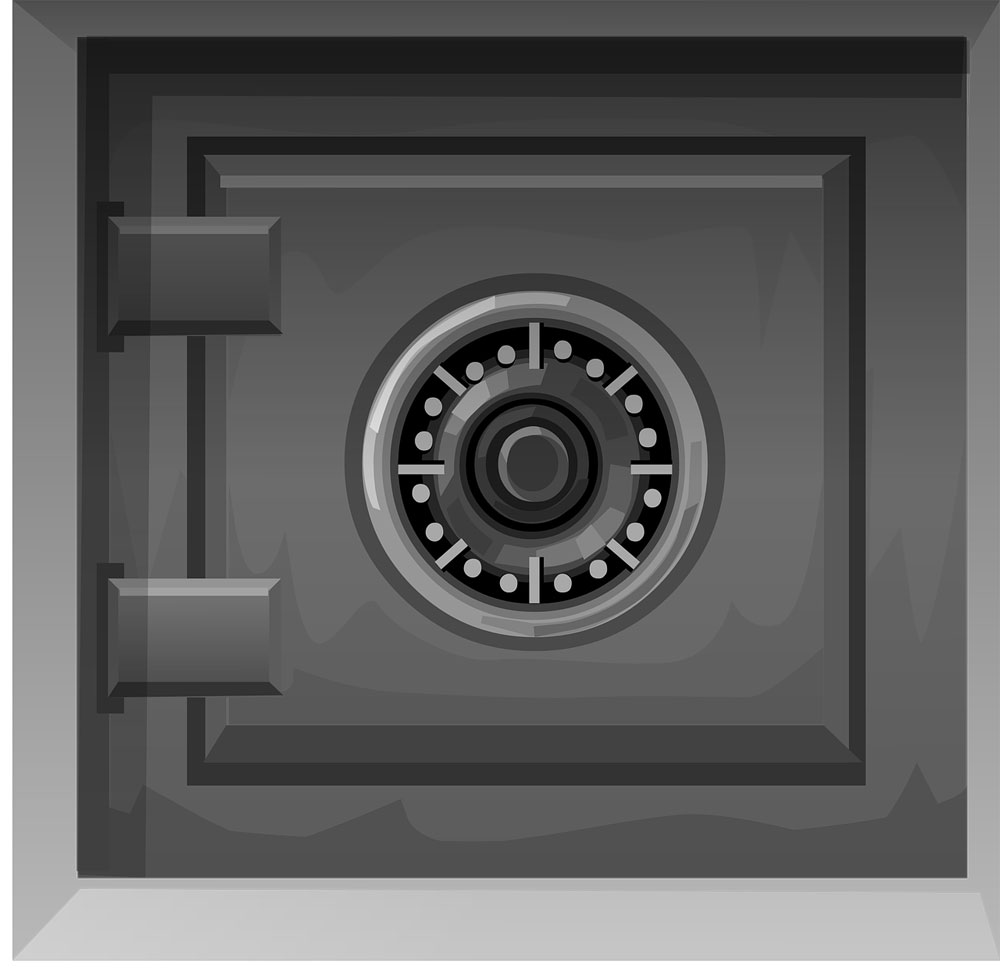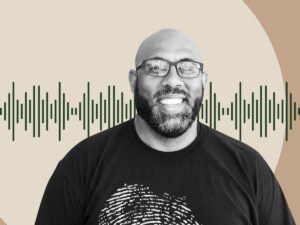
When we asked on Monday for stories regarding your efforts to get support from the Paycheck Protection Program, the $349-billion initiative designed to help for-profit and nonprofit businesses with 500 employees keep workers on payroll, we expected to get some responses, but did not anticipate the deluge of stories we received.
Others in our networks were fielding similar reports of failures of access, running the gamut from being told to move to the back of the line to simply being ignored or met by lenders’ confusion over hastily patched together rules and priorities. Under the “first come, first served” approach, panic has naturally ensued as nonprofits stare down growing deficits in an economy that’s ever more profoundly stalling.
We did get one positive story: A writer from Texas tells us that “First Financial Bank of Abilene did an outstanding job.” We wish there were more stories like that one. Alas, many were far less favorable.
Later in the week, we spoke with Kate Barr, CEO of Propel Nonprofits in Minnesota, who confirmed that the stories we received were not extraordinary. Barr, who has advised nonprofit executive directors regarding finances for decades, says she has “never seen anything like it.” Barr adds, “The rollout has been a disaster.”
Of course, this could have been avoided if the federal government had committed to covering payroll during the crisis, as other countries like Great Britain have done.
That said, if the feds insisted on giving money to businesses and nonprofits in the form of forgivable loans, using the US Small Business Administration (SBA) as the vehicle was not a bad idea. After all, the SBA, notes Barr, is a lender. And banks provide “a huge readymade immediate distribution network.”
So, what went wrong? A few big things.
One was expecting to design a program in 24 hours. The federal regulations governing the program literally came out at 6 pm Eastern Time on Thursday, April 2nd, with loans supposed to be available the following morning, which was preposterous. On the evening of April 2nd, banks faced a series of questions impossible to resolve overnight. Barr identifies some of these: “How would they process it? What would be their system? Every individual bank from the giant megabanks to the community banks, every bank had to figure out how you are going to do it.”
“We are living with the consequences of that speed,” Barr adds. “The worst part for nonprofits is that because every bank had different answers to those questions, there were horrible inconsistencies.” As a result, when nonprofit leaders compared notes, everyone had different information. For instance, some banks limited applications to existing customers; others did not.
Second, from the federal government angle, the scale of the effort required the SBA to process far more loans than usual. In fiscal-year 2019, the SBA reportedly “approved $28.2 billion in loans and more than 63,500 loans to small businesses.” This is but a fraction of the scale and scope of the Paycheck Protection Program.
Worst of all, though, was the “first come, first served” policy, which created widespread panic that if you didn’t get in line fast, tough cookies.
Barr notes that “with nonprofits, we’re used to when the money is gone, the money is gone.” She observes, “We don’t know from Treasury how much of the $349 billion has been obligated…that panic was personal. These are executive directors who want to pay their staff.” While it is not an absolute certainty, Barr believes that if the $349 billion runs out, there will be more money provided. Already, US treasury secretary Steve Mnuchin has proposed an additional $250 billion.
Another challenge is the uncertainty of how fast the cash will get out. That question, of course, won’t be answered until it is, but Barr says that she expects that the loan approvals will be forthcoming within two weeks.
The fact that the chaos is subsiding and online toolkits and calculators are becoming widely disseminated, however, does not mean that all is well. Barr says, “There are incredible disparities in access. Did you have a banker that you could call and ask, ‘Hey, can you make sure I go through in the door?’ Did you have a bank relationship all?”
Barr adds that some banks had decided for capacity reasons to only serve existing customers, so, at least initially, the question, “Did you have an account at that bank?” was crucial.
Even now, however, access to the program may vary significantly depending on where you are located. As Barr puts it, “Nonprofits in regions that have mostly national banks are going to have a much harder time than those in regions with healthy community and regional banks.” Community and regional banks, she explains, have been much better at facilitating access for small nonprofits than the “Big Four” banks of Wells Fargo, Chase, Citi, and Bank of America.
As for the application itself, it “is a breeze compared to a normal SBA application,” Barr says, “but you still have to do all of your documents.” It matters whether you can pull documents electronically for payroll, bylaws, and articles of incorporation. It is impossible not to notice that the federal government already knows how much nonprofit payrolls are, given regular Social Security payroll tax payments, which can make the need to track down those 940 or 941 reports infuriating. Those nonprofits which “have a competent accountant and payroll system or a CFO can do it quite easily,” observes Barr, “and others have difficulty putting it together. It is very inequitable.”
Barr has been in regular communication with Minnesota nonprofits, including participating in webinars advising nonprofits regarding the program. When asked the hardest question she faced, Barr replied:
One of the questions that came up was, “What if I don’t think I’ll still be in business? Should I do this? Is it too risky?”
It is a painful question to hear, and also an honest question to hear. This is one of the many moments I always feel for nonprofit executive directors. They’re my favorite people, but that’s hard.
Of course, this is a continuing story. Just yesterday, we ran an article that looked at a coalition effort led by the National Council on Nonprofits to rectify some policy issues in what is being called “Phase IV” of the coronavirus pandemic policy response.
In any case, given that the Paycheck Protection Program is the main lifeline available for so many nonprofits and small businesses, we certainly hope the manifold flaws described herein are rectified in short order!
Below, we include many of the responses we received when we made that callout on Monday. We’ve done our best to anonymize the responses. We felt it was important to reflect back to our community what you so kindly shared with us—and to document both the chaos and the terror of a moment in time when a national relief effort came crashing down.
Sign up for our free newsletters
Subscribe to NPQ's newsletters to have our top stories delivered directly to your inbox.
By signing up, you agree to our privacy policy and terms of use, and to receive messages from NPQ and our partners.
Lost in Line in the Nation’s Capital
I am president of a small neighborhood nonprofit in Washington, DC, with an annual budget of about a quarter-million. Our executive director tells me, “I was pushing for the Paycheck Protection Program because it would’ve covered payroll through June and we wouldn’t have had to pay it back. I have no idea when Wells Fargo actually posted it, because I checked on Saturday and Sunday and saw nothing. I spoke to our bank and he said they posted it yesterday and maxed out already. I called Fidelity Investments holding onto hope that they would also offer loans, but that’s a no-go. And I went to Bank of America to see if I could apply with them. They’re still taking applications but you have to sign in as a business account holder so that went nowhere.”
Feeling the Chill in Frisco
We had a few responses from readers in the San Francisco Bay Area:
We tried to apply for a loan from our existing bank, Wells Fargo, and were told that their system is not yet set up (this was as late as Friday afternoon). Today, there is an article in the San Francisco Business Times stating that Wells Fargo has already distributed all the funds it has available. Who was given access to their application? How was it determined? Does this mean we are not able to tap into the funds we need?
*
Hi. We’ve been trying to apply for the Paycheck Protection program via Wells Fargo, and have so far only been able to fill out a form expressing interest—which has already been taken down from the Wells website after about 24 hours, replaced by a message saying the interest is overwhelming and they’re not taking any more forms. Then I saw a list in an article (somewhere) of things banks might require, and some of them I have never even heard of. Many of the others are only available in hard copy in a drawer in our—closed—facility. So far, I’m not impressed.
*
We operate a small nonprofit art studio supporting careers for adults with disabilities, For the safety and health of our artists and staff, we suspended on-site operations on March 16, 2020.
We are continuing to provide services in a virtual studio format for our artists, and staff have undertaken an enormous learning curve to shift our 40-year history of hands-on, relationship-heavy art practices, and personal support to remote service delivery.
A PPP loan through the SBA and our local bank is imperative to ensure that this 40-year trajectory continues; we are considered an essential services provider in the fragile ecosystem of intellectual/developmental disability services.
However, applying for this loan has been a technical rollercoaster. As you note, the reporting on loans approved on the first day, within the context of a first-come, first-served approval basis, adds another layer of intensity to navigating hastily developed systems.
I used to teach web development as an artist; hence I was able to hack a working link to the application portal at my local bank, since the link they sent did not work and seemed to be a developer’s test link.
However, we still don’t know if our documents were received, as submissions repeatedly produced an error message, even when the bank sent out new, working links.
Today, in addition to overseeing the continued pivot of services, I’ll be calling our assuredly overwhelmed bankers, to ensure that we are using the best, most up-to-date link, to submit documents that may or may not be processed into a loan at this late date.
It is disappointing, but not surprising, to see that this is the way our federal government has responded to small business and nonprofit needs.
It reflects the complete abdication of responsibility at the highest levels of government which has impacted the safety, health, and resilience of those of us who are taking responsibility on the ground to solve problems, provide services, and maintain continuity in a broken system.
Stranded in the Midwest
I lead a nonprofit. Regions is our bank. The application was not up on Friday morning. Then the site crashed. We can’t use our regular login and have had to create a new one with the help of the bank. Today is Monday, and our application still is not in. We are very frustrated and hope that these delays do not preclude our ability to receive funds.
Frozen Out in the South
We were in constant contact with our primary bank for nearly two weeks. And even as late as Friday afternoon, April 3rd, we were told not to worry. We were told that there was plenty of money, it won’t run out, and we’re on their list. Then yesterday they told us they had so many requests and we didn’t make the cut because we were a new customer for them (beginning January 2020). I know banks have to make decisions about who to select, but I haven’t seen this criterion mentioned anywhere. I’m not going to call out our bank. I realize they had difficult decisions to make under enormous pressure.
The PPP is absolutely not a “first-come, first-served” program, as we were one of the first to contact our bank to be included, before CARES was approved. So, unless the aid package significantly increases in the future, we’re likely missing out on what’s effectively a quarter-million-dollar grant for us. Our other banks require either being a business loan customer or having a commercial borrowing arrangement with them.
Bottom line is that the PPP as currently administered is absolutely not a fair and equitable program. And we didn’t want to request consideration through all of our banking relationships as that would truly flood the system if everyone did that.
No Money in the Shadow of Wall Street
My bank is still not able to process PPP loans as of noon today, Monday. My bank is a small bank that serves New York and New Jersey customers. They say they’re working on the problems, but I’m panicking that SBA loan funds will run out before the bank gets it together. We greatly need these emergency funds for payroll.
What Lessons Can We Learn?
Perhaps the most frustrating shared thread common to all of the above stories is that a program that is supposed to preserve small business and nonprofits so that they can survive the economic crisis has, because of the unevenness in program delivery, reinforced uncertainty. As yet another reader wrote to us, “I don’t mind jumping through hoops to keep my organization healthy and solvent, but it’s a bit out of control. Things are becoming dog-eat-dog and it is very unfortunate.”
In the meantime, the economic freefall continues. Yesterday, the US Department of Labor released the latest weekly unemployment figures. Over the last three weeks, unemployment figures have been as follows:
- Week ending April 4th: 6,606,000
- Week ending March 27th: 6,867,000 (adjusted upward from 6,648,000)
- Week ending March 20th: 3,307,000
In short, 16.78 million workers have lost their jobs in three weeks, and over 17 million in the past four weeks. Already the estimated US unemployment rate has reached 13 percent, greater than at any time since the Great Depression. In such circumstances, stemming the tide of bleeding will be critical—and advocacy will play an important role in whether or not that happens.
Of course, we also want to continue to hear your stories—from wherever you may be. If you get a Paycheck Protection loan and are able to keep your nonprofit going as a result, we want to know that. If you are one of those 17 million laid-off workers, your stories are critical to hear, too. If you have retooled your programs to survive or joined with others in community mutual aid networks, please tell us. We know that we cannot cover everything from our remote home offices. So, please make yourself heard.













